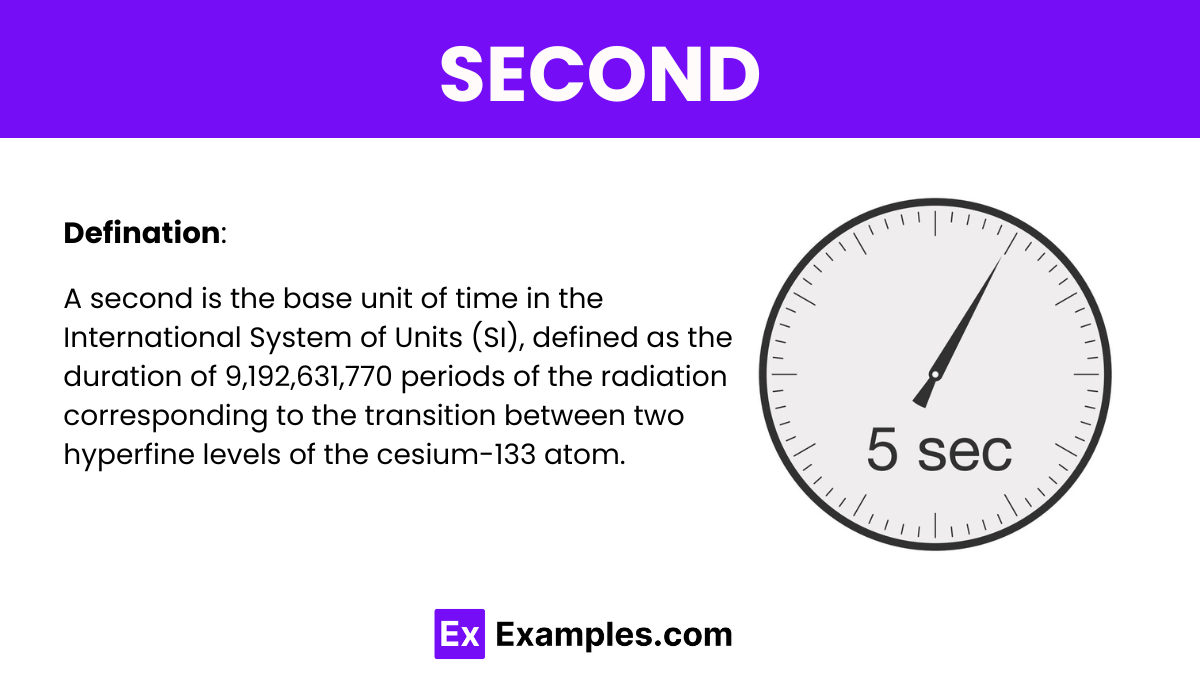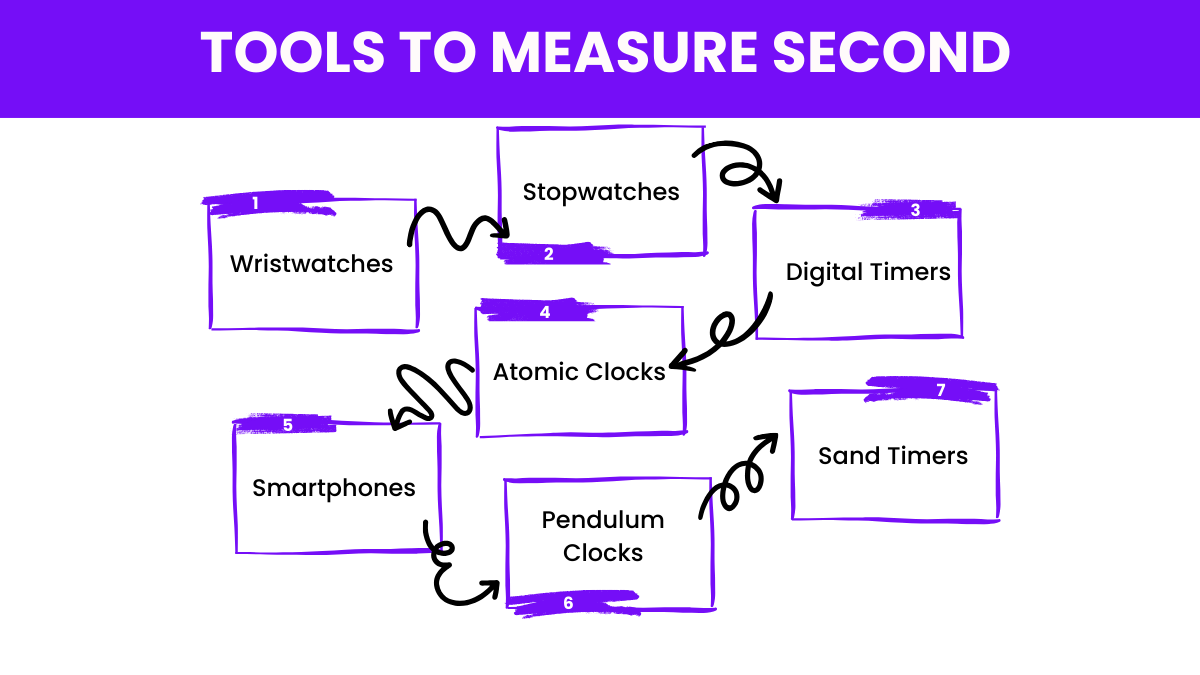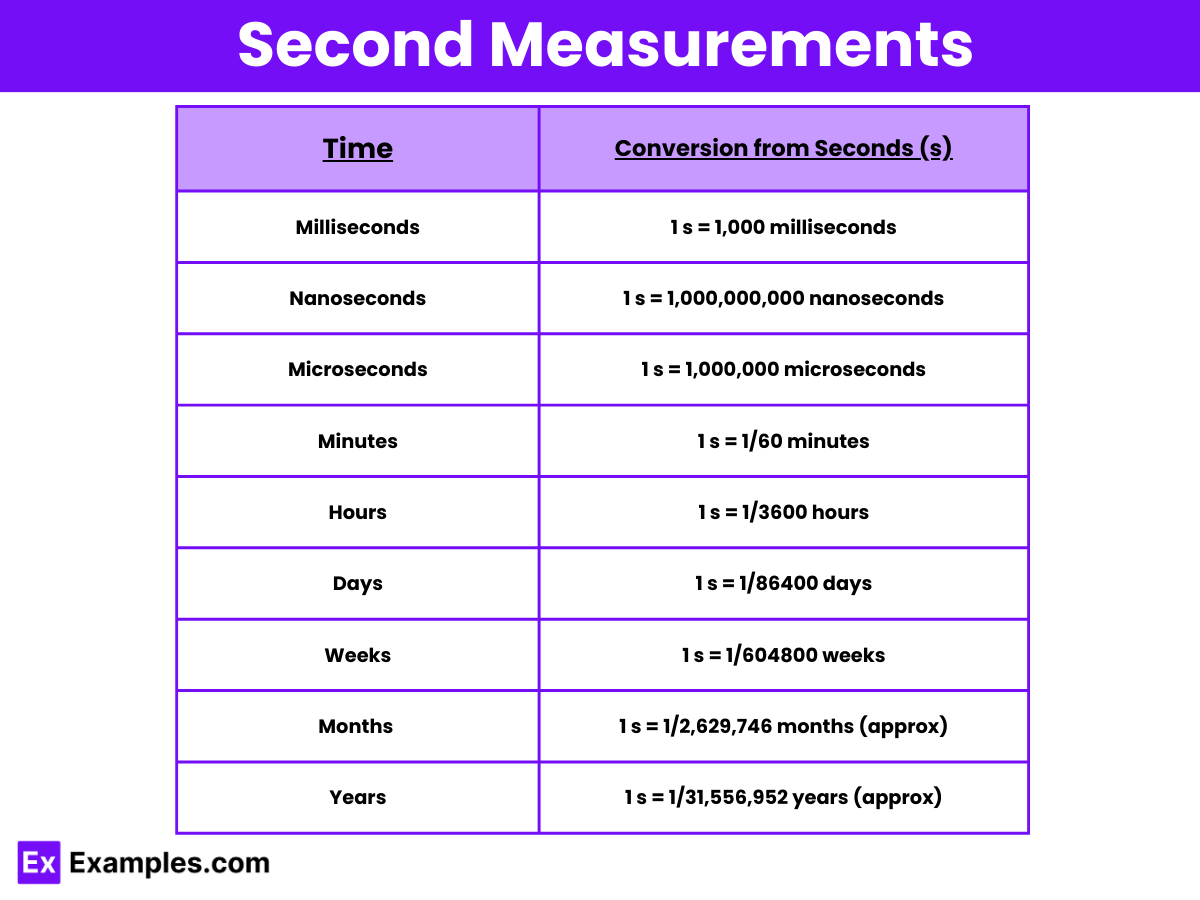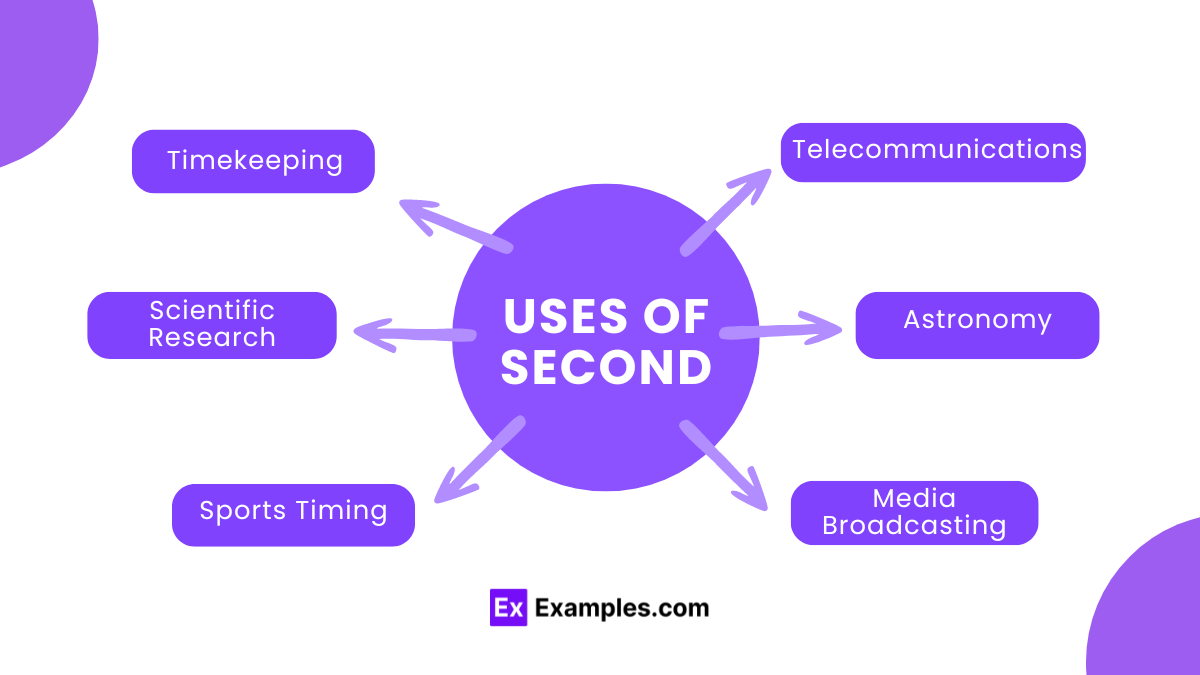How many seconds are there in 1 minute?
30
45
60
100


A second is the base unit of time in the International System of Units (SI) and is symbolized as “s”. It is defined by the duration of 9,192,631,770 periods of the radiation corresponding to the transition between the two hyperfine levels of the ground state of the cesium-133 atom. This precise measurement makes the second fundamental for maintaining time standards used in various scientific, technological, and civil applications worldwide.
It is specifically determined by observing the behavior of cesium-133 atoms under certain conditions. When these atoms are in their ground state, they emit radiation, and the second is defined as the time it takes for 9,192,631,770 cycles of this radiation to occur. This definition ensures that the measurement of a second is precise and consistent, serving as the cornerstone for timekeeping in fields ranging from astronomy to telecommunications and beyond.

Measuring seconds is fundamental in various contexts, from everyday life to scientific research. Here are some common tools used to measure seconds:
In English, when used as an ordinal number, “second” denotes the position immediately following the first. It is typically used to describe the placement in an ordered sequence, such as coming second in a race or ranking second in a competition. This term helps in indexing or ranking elements within a list, establishing a hierarchy or sequence among them.
In the context of latitude and longitude, a second is used as a finer measure of angular distance on the Earth’s surface. Latitude and longitude are typically expressed in degrees, minutes, and seconds. One second of latitude or longitude represents a fraction of a degree:
A second of latitude always equates to approximately 30.87 meters (101 feet) on the Earth’s surface. However, a second of longitude varies in physical distance depending on the latitude, becoming smaller as one moves towards the poles, due to the curvature of the Earth.
This precision, down to seconds, allows for a very detailed and specific location pinpointing, which is crucial for navigation, mapping, geolocation technologies, and geographical information systems (GIS).

Here’s a table showing the conversion of seconds to other common units of time:
| Time Unit | Conversion from Seconds (s) |
|---|---|
| Milliseconds | 1 s = 1,000 milliseconds |
| Microseconds | 1 s = 1,000,000 microseconds |
| Nanoseconds | 1 s = 1,000,000,000 nanoseconds |
| Minutes | 1 s = 1/60 minutes |
| Hours | 1 s = 1/3600 hours |
| Days | 1 s = 1/86400 days |
| Weeks | 1 s = 1/604800 weeks |
| Months (average) | 1 s = 1/2,629,746 months (approx.) |
| Years | 1 s = 1/31,556,952 years (approx.) |
Understanding how to convert seconds to other units of time is crucial when working with various measurement systems, particularly in fields where precise time management and synchronization are required. Here’s a straightforward guide to converting seconds to and from other common units of time:

Seconds are the primary unit of time measurement and play a crucial role in various aspects of daily life, science, and technology. Here are some key uses of seconds:
One second is defined as the time duration of 9,192,631,770 periods of the radiation corresponding to the transition between two hyperfine levels of the ground state of cesium-133.
One newton-second (N·s) is the unit of impulse in physics. It represents the impulse transferred by applying one newton of force for one second, impacting an object’s momentum.
The smallest unit of time commonly used in timekeeping and referred to as a “second” is the Planck time, approximately 5.39×10⁻⁴ seconds, the shortest measurable interval.
Text prompt
Add Tone
10 Examples of Public speaking
20 Examples of Gas lighting
How many seconds are there in 1 minute?
30
45
60
100
How many seconds are in 1 hour?
3,600
3,000
3,200
3,100
How many seconds are in 1 day?
86,400
24,000
72,000
48,000
How many seconds are there in one minute?
30
60
100
120
How many seconds are there in one hour?
1,800
2,400
3,600
4,200
Convert 0.5 hours into seconds.
1,200
1,800
2,400
3,000
If a task takes 2 minutes and 30 seconds, how many seconds does it take?
120
140
150
170
What fraction of an hour is 900 seconds?
1/4
1/3
1/2
1/1
A movie lasts 1 hour and 45 minutes. How many seconds is the duration of the movie
4,500
5,400
6,300
7,800
If a clock shows 15 minutes past 2, how many seconds have passed since 2 o'clock?
300
600
900
1,200
Before you leave, take our quick quiz to enhance your learning!

